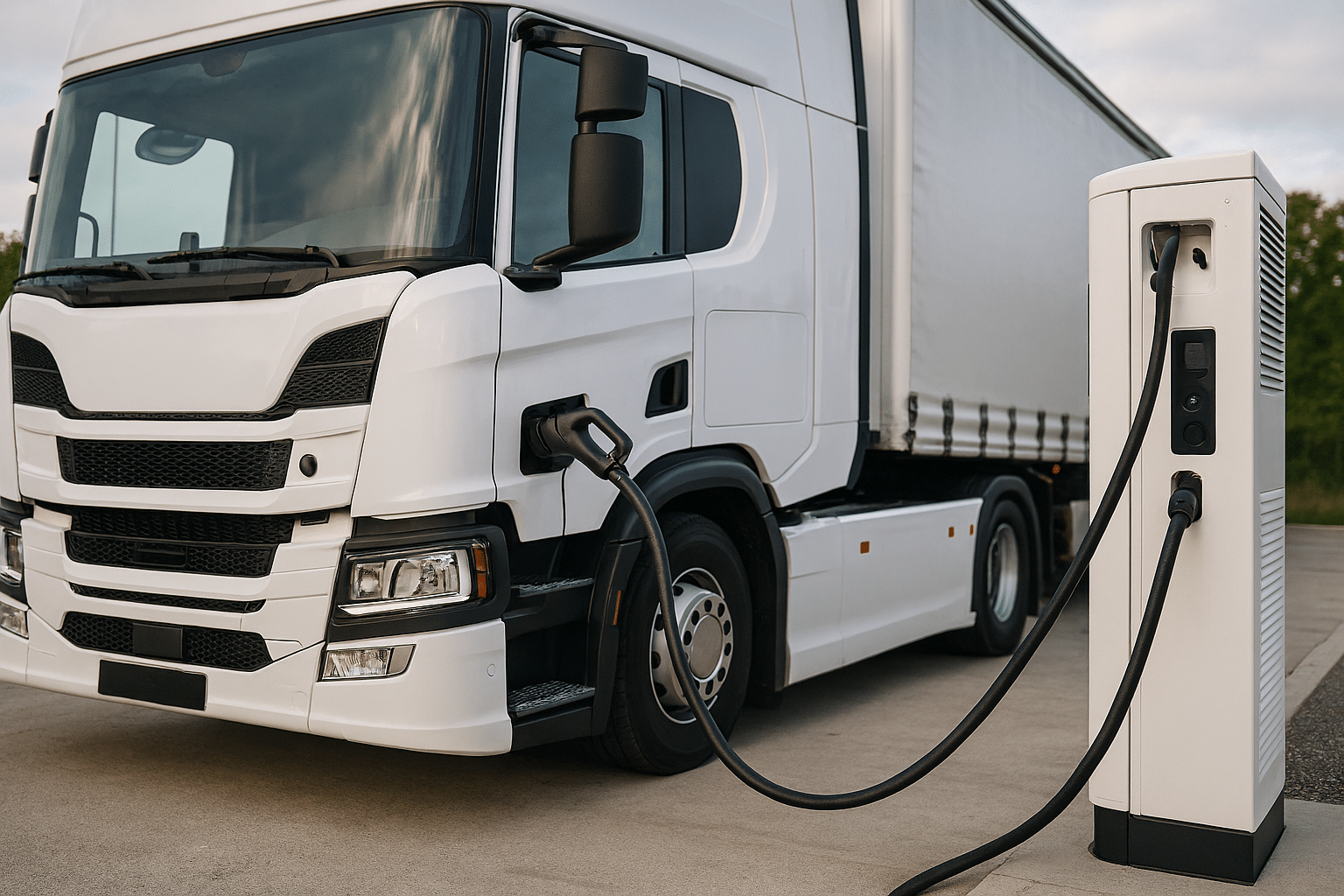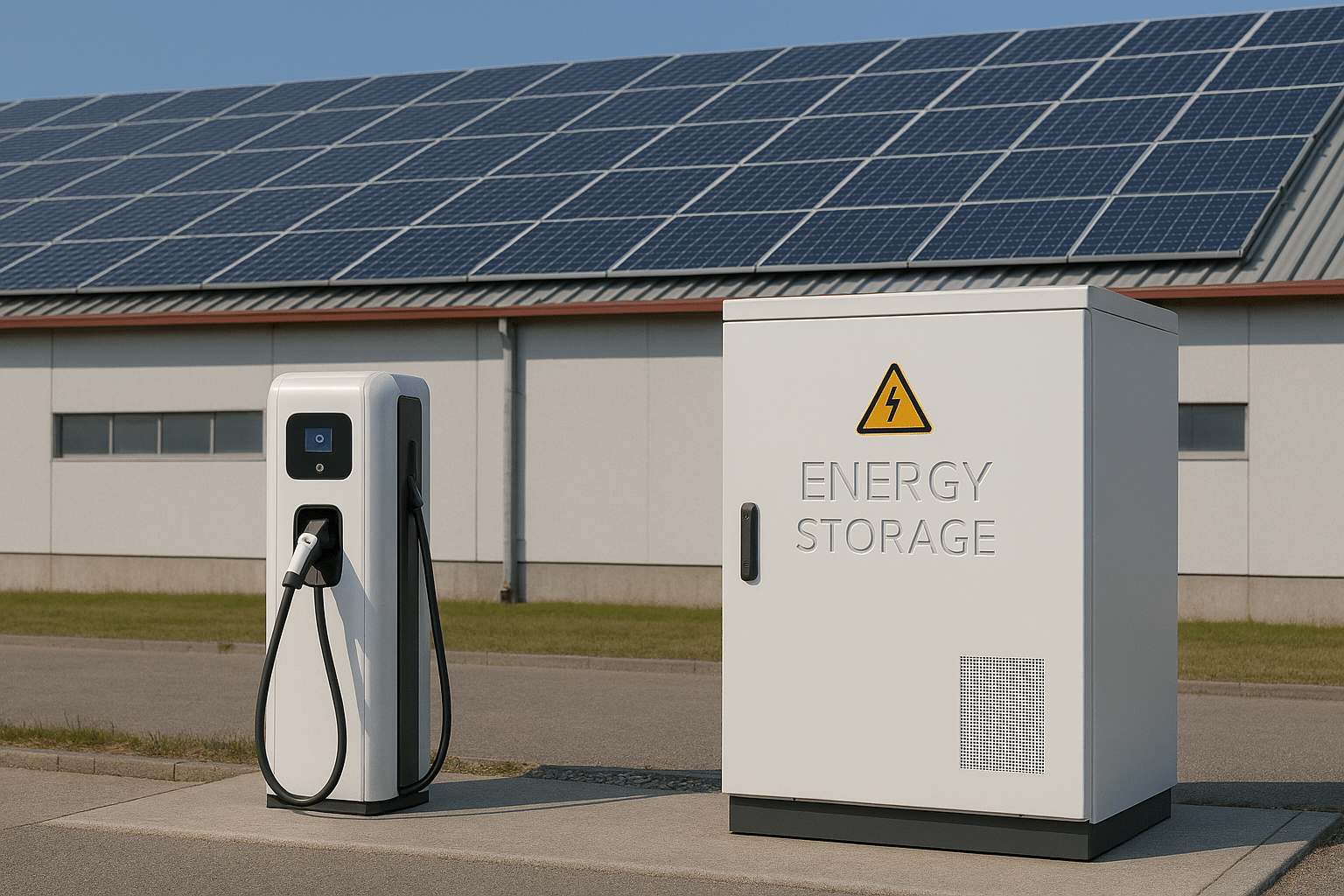News
[Open Letter] Thierry Déau: Why sustainable infrastructure is a key part of rebuilding the post-COVID economy
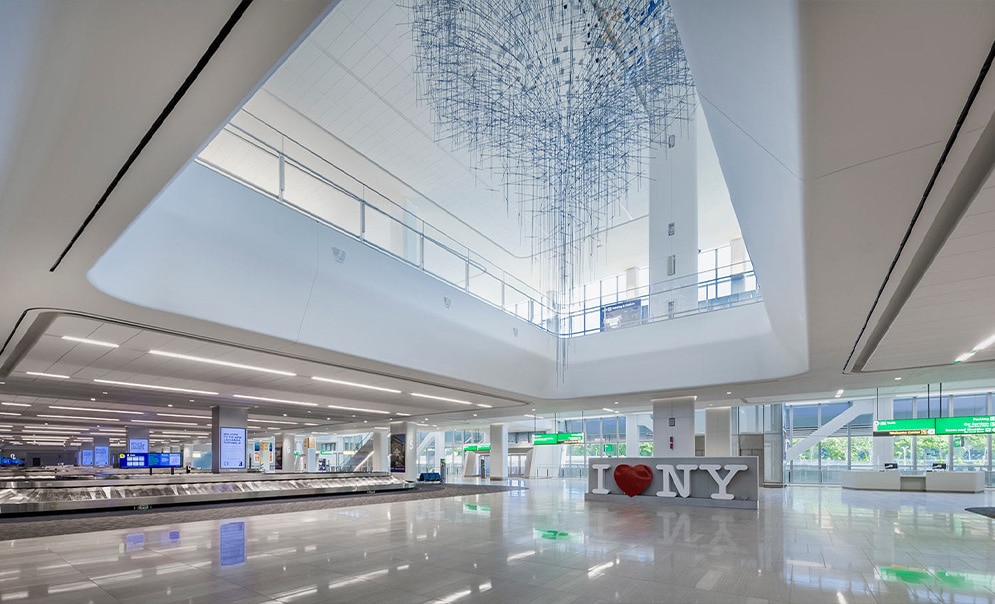
08.09.2020
- The COVID-19 pandemic has shown that access to sustainable infrastructure is far from equitable.
- Investing in sustainable and resilient infrastructure is a critical element of post-pandemic rebuilding, to improve economies and health and create jobs.
- The LaGuardia Airport Terminal B reconstruction is a good example of how to conceive an infrastructure project through the lens of lowering the carbon footprint and integrating ESG principles.
COVID-19 has highlighted the critical importance of infrastructure – and specifically, the resiliency of that infrastructure – to the future of societies and economies. As lockdowns ease, governments around the globe are moving rapidly to devise roadmaps to recovery that address immense social and economic challenges – some new, others deepened by this chapter. What’s needed now is deep socio-economic rebuilding during which we’ll be called upon to clearly express our values. Crisis brings devastation, to be sure – but it also brings an opportunity to reevaluate what kind of a society we want create for future generations and to integrate our responses to that question into our business practices at all levels. One thing is certain: we must rebuild our infrastructure, and our world, in a resilient and sustainable way.
Why sustainable infrastructure – and why now?
Infrastructure refers to the vital physical resources, both public and private, shared by communities in facilitating all aspects our daily lives: transportation (our roads, tunnels, rail lines, airports, bridges); education (schools, universities); health (hospitals, research and testing laboratories, mobile health facilities); civic life (justice centers, government facilities) as well as all of the technology and its related grid that allows us to live, learn, work and circulate every day. This shared use of and necessity for this collective infrastructure creates a web of interdependence, shared spaces, equity of access and common ground within communities. But as illustrated by recent extreme events – COVID-19 as well as the rise in wildfires, tsunamitype events and extreme flooding directly related to climate change – access to resilient infrastructure is far from equitable. COVID-19 has disproportionately affected people working in lower-wage jobs and living in underserved communities with less, if any, access to healthcare; the same is true of climate change and pollution impact.
As these events have taken the interdependence out of abstraction and into clear tangibility, there is a clear need for a socially responsible transition, with the public and private sectors pivoting to develop solutions to these challenges. And that includes driving forward the sustainable infrastructure pipeline – roads, buildings, energy and water projects with due consideration to economic, social and environmental implications. This approach includes, among others, lower carbon and environmental footprinting; protecting biodiversity; proving resiliency to climate change; moving beyond basic compliance on core labor and human rights standards increase inclusivity, diversity and opportunity for communities and prioritize local recruitment; and using these project platforms to drive local economic development and capacity building, and more broadly improve the quality of life in the surrounding community and region.
Case study: LaGuardia Airport renovation
The recent reconstruction of New York’s LaGuardia Airport Terminal B – developed by LaGuardia Gateway Partners, comprised of Meridiam, Skanska and Vantage Airport Group – is a good example of how to conceive each aspect of the physical project and the process through the lens of leveraging every opportunity possible to lower the carbon footprint and integrate principles of environmental, social and corporate governance (ESG). That includes everything from creating economic inclusion, opportunity and building capacity by hiring locally with a focus on diversity, to examining each element of airport construction and its daily functions for carbon reduction.
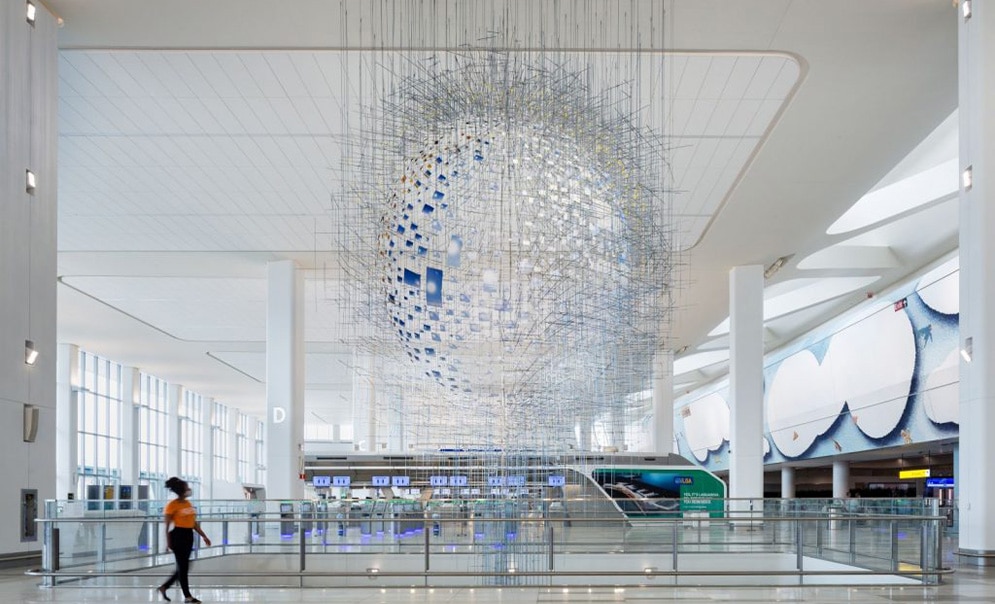
The newly renovated LaGuardia Airport Terminal B
The new $4 billion state-of-the-art terminal – which has continued opening in phases even during the pandemic – includes a new headhouse (the main part of the terminal for check-in, security, commercial and baggage claim), two island concourses with 35 gates, and a central heating and refrigeration plant.
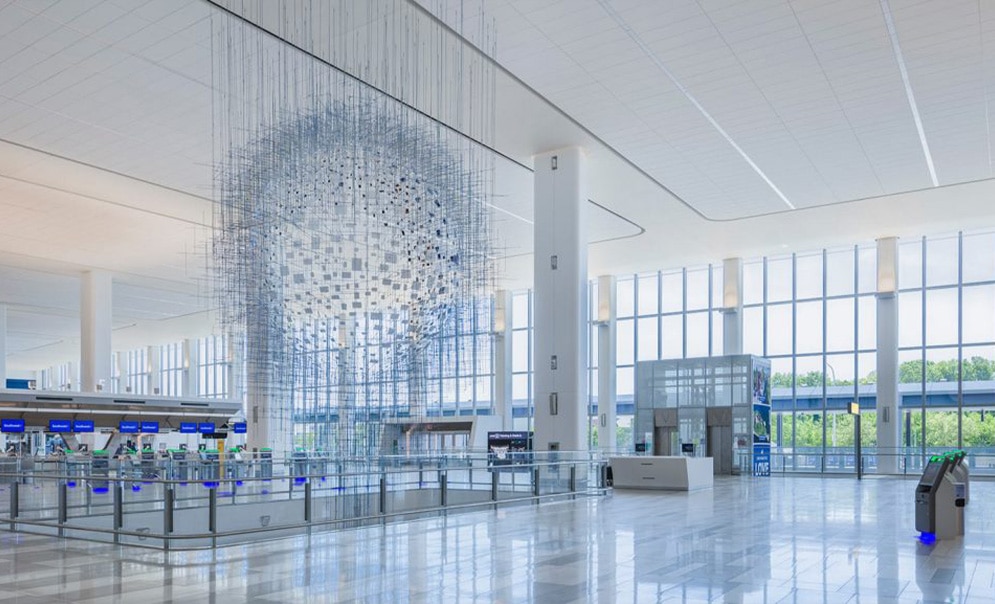
The newly renovated LaGuardia Airport Terminal B
Consistent with the carbon reduction goals of New York’s Governor Andrew Cuomo and the Port Authority of New York and New Jersey, the new Terminal B incorporates measures to reduce greenhouse gas (GHG) emissions. A few examples include the dual taxi lane which provides for more efficient aircraft movements within the apron area, the installation of electricpowered Ground Power Unit (GPU) and PC Air units at each gate in lieu of fossil-fuel fired units, and the planned GSE Electrification program to transition to the exclusive use of electric baggage tugs, belt loaders and pushback tractors for aircraft turnaround services. Together, these efforts will contribute to the Port Authority’s mission to achieve an 80% GHG emission reduction by 2050.
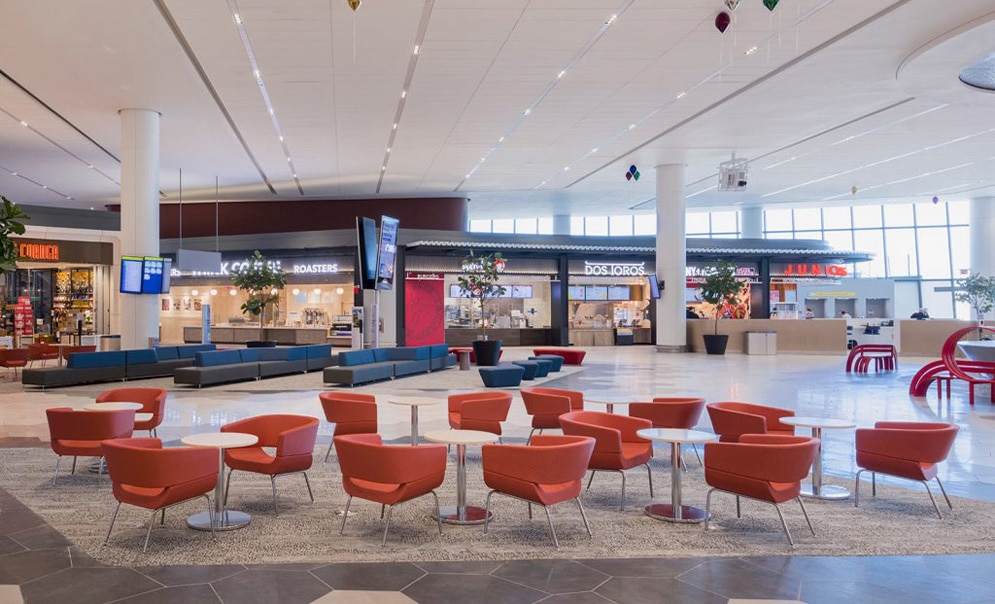
The newly renovated LaGuardia Terminal B will continue to provide jobs for the local community and minority and women-owned firms
In 2018, our concession partners — working through LaGuardia Redevelopment and the Council of Airport Opportunity – hired almost 400 people, the majority from Queens, to work in Terminal B. Through our construction partners, we have committed contracts valued at $810 million to 270 minority and women-owned firms.
What’s on the horizon more broadly for airports in the future?
Looking into the future, the short-term focus will be on the production of renewable energy (biomass, biogas, solar), which have proven to have an advantage for the boarder urban ecosystem surrounding airports. Next, we’ll look to the deployment and distribution of green hydrogen, which, over time, could provide power to nearly any application, from fuel cellpowered shuttle buses taking passengers to and from their hotels or rental car stops, the rental cars themselves and the whole range of vehicles and equipment services including baggage tow tractors, tugs, loaders, forklifts and more. And in the long term, we are looking beyond the traditional, physical airport infrastructure towards development of energy production and consumption of airports.
What do we do next?
Every challenge in the battle against climate change also presents unique opportunities for a culture change. The air-travel ecosystem provides an excellent platform for engagement of the full stakeholder spectrum in establishing the decisive balance between critical development and existential sustainability. Prioritizing sustainability will foster economic and environmental resiliency, and strengthen rural and urban communities by improving health and well-being and creating job opportunity. These outcomes simultaneously address the gaps both underlined and deepened by the recent pandemic, while better preparing us for those that may lie ahead. In response to the COVID-19 pandemic, many governments have already called for stimulus plans that involve infrastructure, which will be a critical part of rebuilding. These plans will differ by region but are likely to translate to an acceleration of the pipeline. Furthermore, the calls for consistent, inherent resiliency and sustainability are multiplying, which we see as a validation of our model. Meridiam’s goal has always been to create strong emulation across a new asset class in which resiliency and sustainability are considered implicit risk-mitigation factors. The road has turned to meet us, and we hope others will join us on this path.

